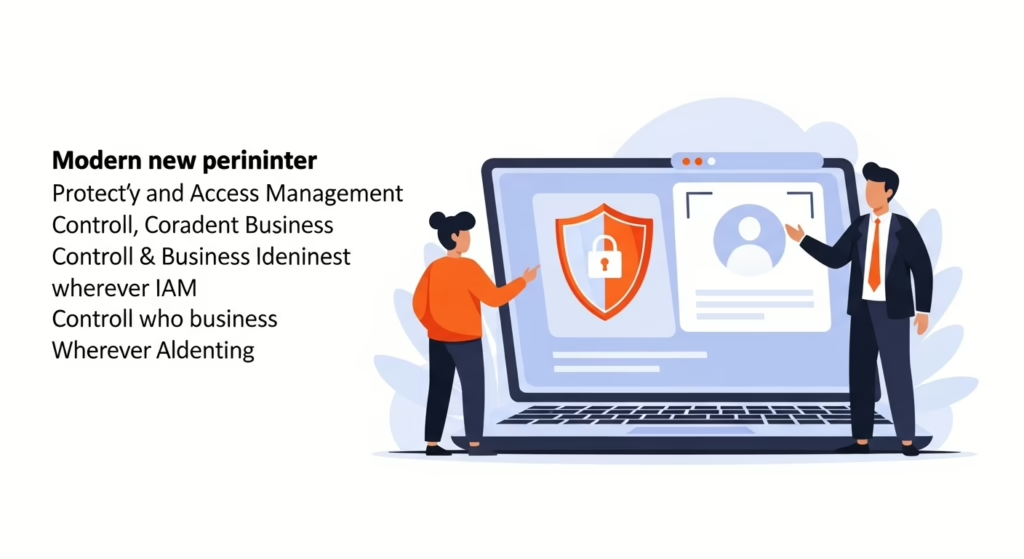Why Identity Management is Your New Network Perimeter

Beyond the Firewall
For decades, business security was pictured as a castle with a moat. Your office was the castle, and your firewall was the moat, protecting everything inside. But today, where is your “inside”? Your data is in the cloud, your employees work from home, and your applications are accessed from personal devices. The old castle-and-moat model is obsolete.
The new perimeter isn’t a physical location; it’s identity. Protecting your business now means controlling and securing who has access to what, wherever they are. This is the core of modern Identity and Access Management (IAM).
As a Systems Engineer and vCISO with extensive experience in cloud platforms like Microsoft Azure and Linux environments, I’ve helped businesses make this critical shift. Protecting your network today is less about building higher walls and more about issuing smarter, verifiable digital ID cards.
The Rise of the “Identity-Defined” Perimeter
Think of every user, every application, and every device as having its own identity. A modern security strategy focuses on managing these identities and enforcing strict rules about what they are allowed to do. This approach provides several layers of protection that a simple firewall cannot:
- Securing the Cloud: When your data and applications are hosted in cloud environments like Azure, AWS, or Google Cloud, your traditional network firewall has limited control. IAM becomes the primary tool for ensuring that only authorized personnel can access and manage these cloud resources, preventing a costly data breach.
- Safeguarding Remote Work: The surge in remote work has created thousands of new entry points into company networks. A strong IAM strategy ensures that every remote login, especially via Remote Desktop Protocol (RDP), is authenticated with more than just a password. Implementing multi-factor authentication (MFA) within your IAM system is the single most effective step to secure remote access from hackers.
- Preventing Unauthorized Access: Hackers often gain entry with legitimate but stolen credentials. An IAM system can detect and flag suspicious login behavior, such as an employee logging in from California and then from a foreign country 10 minutes later. By monitoring identity-based signals, you can automatically block these attempts and prevent unauthorized access before damage is done.
- Enforcing the Principle of Least Privilege: A core tenet of good security is that users should only have access to the specific data and systems they absolutely need to do their jobs. IAM allows you to granularly define these permissions, ensuring that if one account is compromised, the hacker’s access is severely limited and they cannot move laterally across your network.
Your Partner in Modern Identity Security
At GRYHAT CYBERSECURITY, we see the big picture. We know that protecting your Orange County business requires a holistic strategy that extends from your on-premise servers to your cloud assets and remote workforce. Our approach, powered by the vigilance of our “Eva” AI and the strategic oversight of our human experts, is built on a foundation of modern identity management.
It’s time to rethink your perimeter. Let’s focus on securing the identities that power your business.
Ready to build a modern defense? Contact GRYHAT CYBERSECURITY for a free consultation and learn how Identity and Access Management can become your strongest protection.





